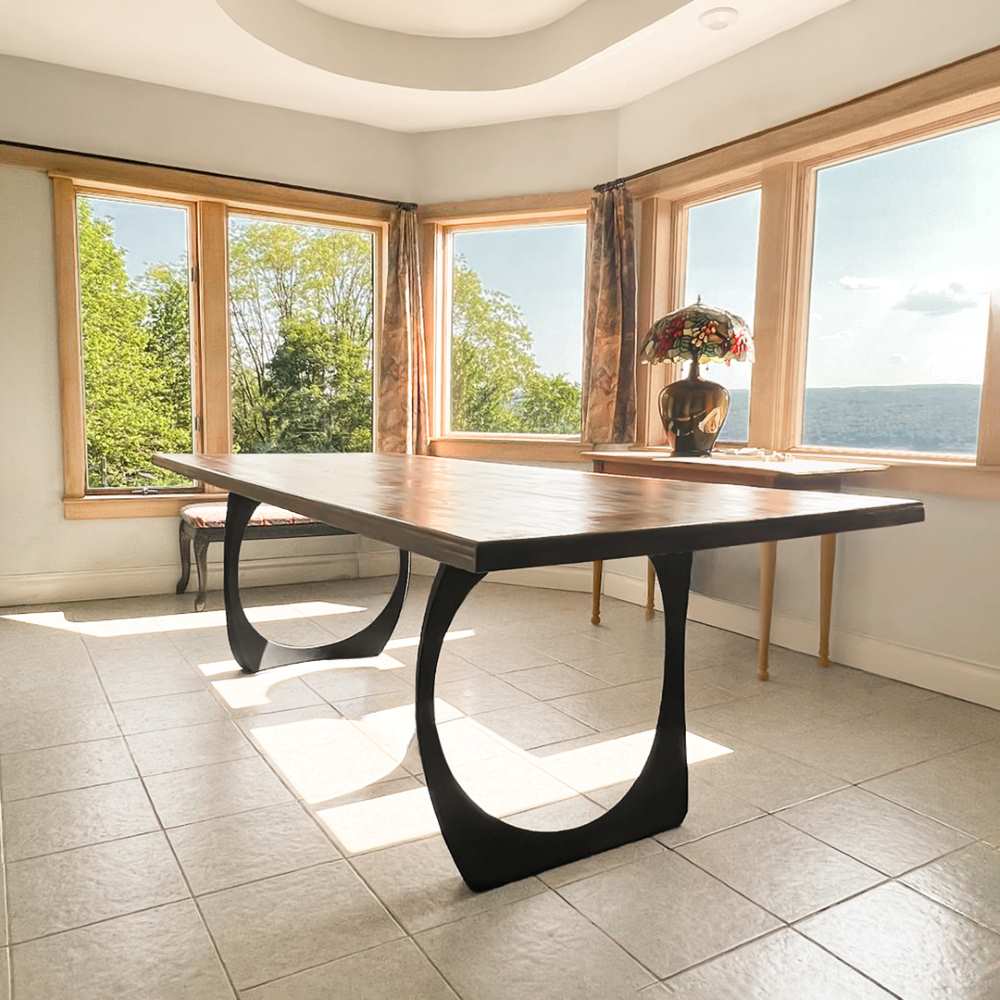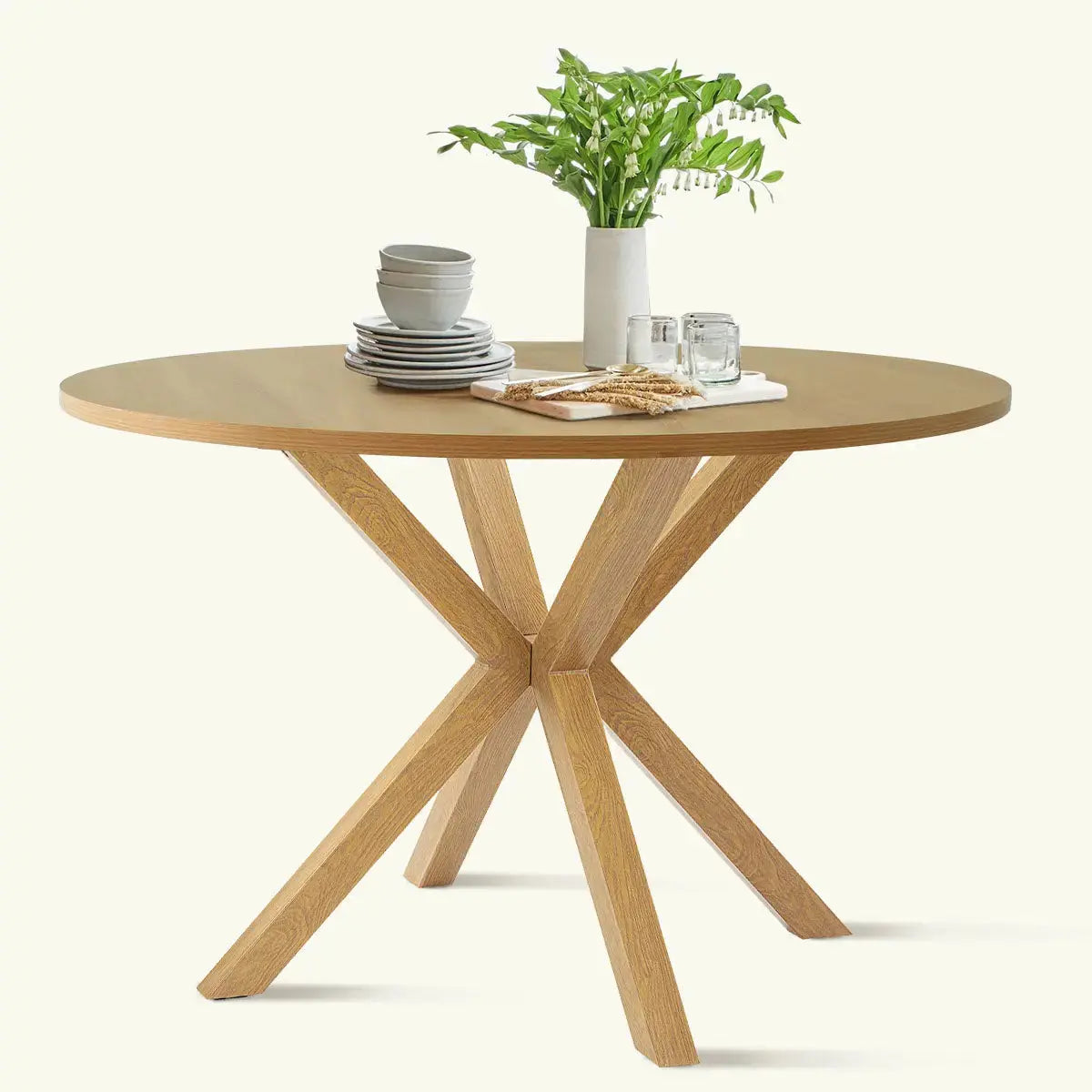Tips for Installing Dining Room Table Legs for a Modern Look
Tips for Installing Dining Room Table Legs for a Modern Look
Blog Article
Just How to Select the Perfect Dining Room Table Legs for Your Home Decor
Selecting the excellent eating space table legs is a nuanced process that needs careful consideration of various components, including your room restraints, aesthetic preferences, and functional demands. The interaction in between materials, dimensions, and designs can significantly influence the ambiance of your dining area, making it crucial to approach this decision carefully.
Assess Your Eating Space
Assessing your dining space is essential for picking the right table legs that enhance both appearances and capability. Begin by determining the measurements of your dining location, consisting of ceiling elevation, floor space, and distance to other furnishings. This details will assist determine the proper dimension and height of your eating table, which directly influences the selection of table legs.
Next, consider the design and format of your dining space. An open-concept design might benefit from table legs that supply visual agility, such as slim metal or acrylic choices. On the other hand, an extra standard setup might require tough wood legs that offer a sense of permanence.
Evaluate the existing color palette and products in your eating area. Integrating the table legs with these components produces a cohesive look that enhances the total style.
Inevitably, a thorough assessment of your eating room will certainly direct you in making an informed decision, ensuring that your table legs not only enhance the visual allure yet likewise offer sensible purposes.
Consider Your Style Preferences
When picking eating space table legs, it is essential to reflect on your individual style choices, as they dramatically affect the total aesthetic of your eating space. Your option of table legs can either complement or comparison with existing decor, making it important to straighten them with your recommended interior design motif.
If your home leans in the direction of a modern-day aesthetic, think about sleek steel or minimalist wood legs that supply a tidy, clean look. For a much more traditional strategy, elaborate wood legs with complex carvings can include a touch of sophistication and sophistication. Industrial designs profit from robust, raw materials such as reclaimed wood and steel combinations, mirroring a rugged beauty.
Additionally, farmhouse and rustic styles often prefer tough, chunky legs that stimulate a sense of warmth and convenience. Conversely, if your décor is diverse, you might choose unique forms or a mix of materials to develop visual passion.

Evaluate Material Options
The choice of material for dining space table legs plays a crucial duty in both sturdiness and visual charm. Typical materials consist of timber, steel, and composite alternatives, each offering distinctive characteristics that can affect the general appearance and long life of your table.
Timber is a timeless selection, known for its warmth and adaptability. Woods like oak and walnut offer outstanding toughness and can be ended up in different spots to match any kind of decor. Softwoods like pine are more prone to scrapes and damages, making them much less optimal for high-traffic areas.
Metal legs, often crafted from steel or aluminum, exude modernity and commercial beauty. They are extremely resilient and resistant to wear, making them suitable for families with youngsters or regular gatherings (dining room table legs). Additionally, steel can be ended up in numerous colors, enhancing the modification possibilities
Composite materials, such as MDF or laminate, offer cost and diverse layouts. While typically much less resilient than strong wood or steel, they can still offer a stylish look and are typically easy to keep.
Eventually, the material you choose must align with your way of living, visual preferences, and the degree of see this page use your table will certainly experience.
Determine Height and Dimension
Selecting the ideal height and dimension for your eating space table is essential for both capability and comfort. The common height for eating tables typically ranges from 28 to 30 inches, enabling enough legroom for most individuals when seated. Nonetheless, it is important to take into consideration the dimensions of your eating area and the kinds of chairs you plan to utilize.

In addition, consider the proportions of your eating area. A larger table in a roomy location can develop a grand ambiance, while a smaller sized table works well in even more intimate settings. Eventually, the ideal height and size will certainly balance with your overall decoration and improve the eating experience for you and your guests.
Explore Modification Possibilities

Furthermore, the design of the legs can be tailored to fit numerous styles, such as rustic, modern, or commercial. Conical legs can evoke a mid-century contemporary feel, while beefy, block-style legs may reverberate with traditional or farmhouse style.
House owners can also discover color surfaces, from natural timber stains to paint, allowing them to match or contrast with the table top and bordering decoration.
Furthermore, leg elevation can be adapted to suit specific seating setups or individual preferences, boosting both comfort and performance.
Lastly, special embellishments, such as carvings or attractive brackets, can additionally personalize the table legs, making the eating experience not simply a statement however a dish item in the home. By thinking about these personalization alternatives, property owners can develop a dining-room table that really mirrors their individuality.
Conclusion
Choosing the perfect dining-room table legs calls for careful consideration of different variables, consisting of the dimensions of the eating area, design choices, material longevity, and desired height. Modification options further enhance the capability to attain a cohesive aesthetic that matches the general decoration. By methodically reviewing these components, home owners can ensure that the picked table legs not just accomplish functional needs but likewise contribute positively he said to the dining experience and ambiance of the home.
Selecting the optimal dining space table legs is a nuanced procedure that needs cautious factor to consider of numerous aspects, including your area constraints, visual choices, and functional needs.Evaluating your dining space is essential for selecting the right table legs that complement both looks and functionality.When establishing dimension, determine the area where the table will be put to ensure it fits comfortably, allowing for at the very least 36 inches of clearance around the table for simple movement. A bigger table in a large area can create a grand setting, while a smaller table functions well in even more intimate settings.Selecting the optimal dining area table legs requires careful consideration of different aspects, including the measurements of the dining room, design preferences, material resilience, and wanted elevation.
Report this page